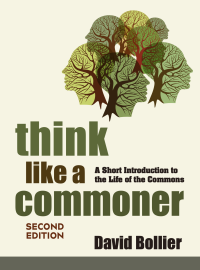I’ve been reading a fascinating book that explores how markets and commons are intertwined in strange, unsuspected ways. Tissue Economies (Duke University Press, 2006), by Catherline Waldby and Robert Mitchell, explores the ways in which blood, organs, cell lines and other parts of human bodies circulate among patients, physicians, researchers, hospitals, pharmaceutical companies and cosmetics makers.
The book is a revelation about a little-known sub-economy that is both highly intimate and crudely impersonal. It shows how human identity and social ethics are entangled with certain body parts but not others, and how meanings shift and evolve as human tissues circulate in different contexts.
For example, people ascribe ethical significance to donations of hearts, organs and embryos to transplant recipients and scientists; the organs are seen as highly personal symbols of personhood. But no such meaning is attached to fingernail clippings, hair and other human waste. Accordingly, the latter can be immediately treated as commodities by those industries that recycle and transform “waste” tissues into saleable products. Placentas can be sold to cosmetic companies and genetic researchers can abstract valuable genetic knowledge from hair and tumor tissue without anyone raising a fuss.
But there is an ethical norm that human organs should not just be bought and sold. That’s because we attach an ontological significance to organs as emblems of our human identity. It degrades them to treat them as mere commodities. Such attitudes inform our notions of property rights and ownership of human tissue.
In 1970, British scholar Richard Titmuss wrote a landmark book, The Gift Relationship: From Human Blood to Social Policy, which explained why a gift economy of blood tends to produce higher quality blood than markets. Blood donation is seen as a way to assert national solidarity and human altruism; markets could not mobilize such motivations, but instead tend to elicit blood from alcoholics, drug addicts and others who need cash.
Titmuss’ book was influential in staving off attempts to turn blood donation and distribution into a marketplace, and to defend the social welfare state against incipient Thatcherism. As M. Callon put it, blood is “entangled” with all sorts of emotional, social, moral and ontological meanings. A person is willing to donate blood because the blood is imbued with positive, high-minded feelings. For these reasons, a gift economy in blood was largely seen as good and the market as dubious. Treating blood as a commodity was seen a an attack on all sorts of noble values.
Yet the arrival of the AIDS crisis, the development of new blood-separation technologies, and the rise of international blood markets have introduced all sorts of complications to the moral economy of blood. Once blood could be “fractionated” (separated) into plasma, the clotting factor fibrinogen, albumin and other components, people’s donations of “whole blood” became much less common. Donation was not an altruistic act to an anonymous stranger of the same nationality because blood components were becoming marketable commodities on a global scale (with genuine therapeutic benefits). The spread of the HIV virus, meanwhile, somewhat changed the meaning of the gift economy of blood. Donation was no longer a simple act of “biological citizenship”; it became a calculated risk of exposure to a deadly virus.
As Waldby and Mitchell write, “Blood safety could no longer be guaranteed by social trust between citizens in a defined national space, but rather was hostage to intricate and mutable forms of circulation and transformation throughout the globe.”
In an unexpected twist, the gift economy in important respects proved less able to defend the quality of blood than the market. Blood banks in the 1980s were reluctant to raise questions about the safety of blood given by civic-minded donors lest it call into question their altruism or decrease supplies of blood. Commercial blood vendors, by contrast, were more willing and able to screen blood for dangers, if only to protect their financial investments. The authors write: “The [blood] banks failed to acknowledge that transnational commodity markets interpenetrated their national gift systems, and that the equation of the gift economy with national identity, safety and equity was no longer viable.”
Although Tissue Economies is mostly about the gifting of and trafficking in human tissue, it is filled with penetrating insights into the ways that markets and gift economies play off of each other. It explores, for example, how the same object can vacillate between gift and commodity, much as light is now known to be both particle and wave. I am already pondering how these insights might apply to online gift economies (think open source software or Flickr photos), whose resources may have double identities as gift and commodity. What is the process for mediating a transition from one to the other? What social and moral consequences follow?
I will explore this issue in another post soon.











Recent comments